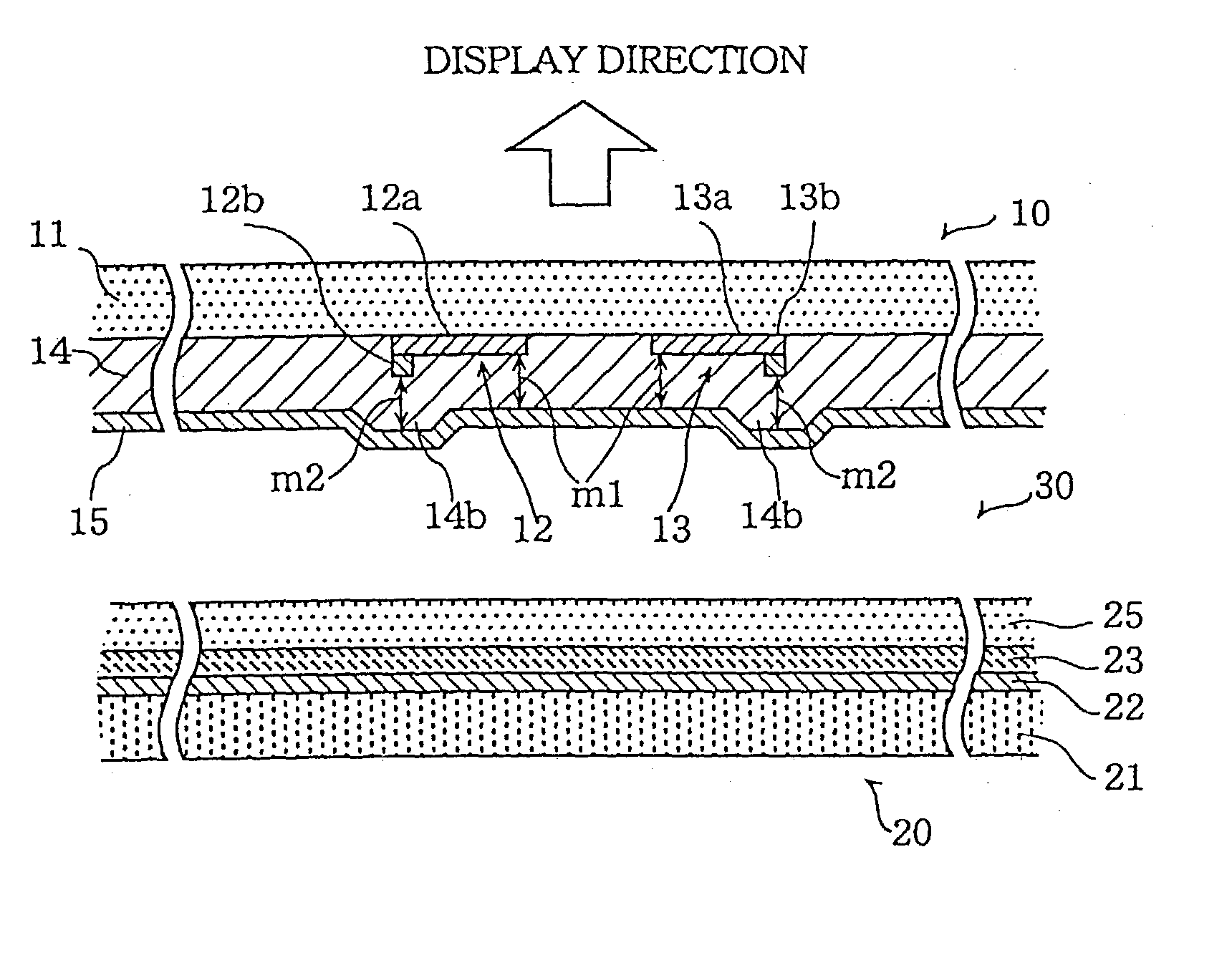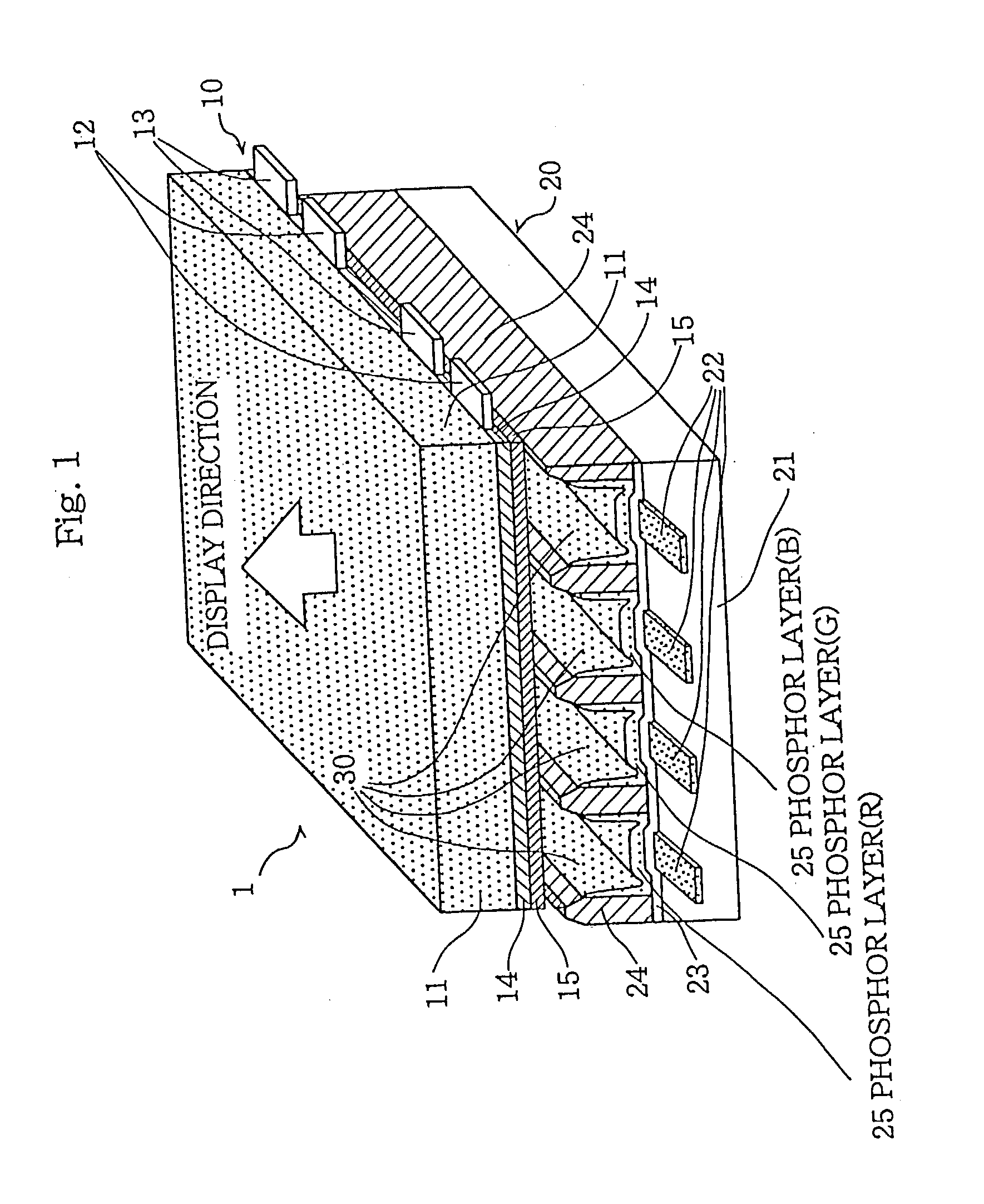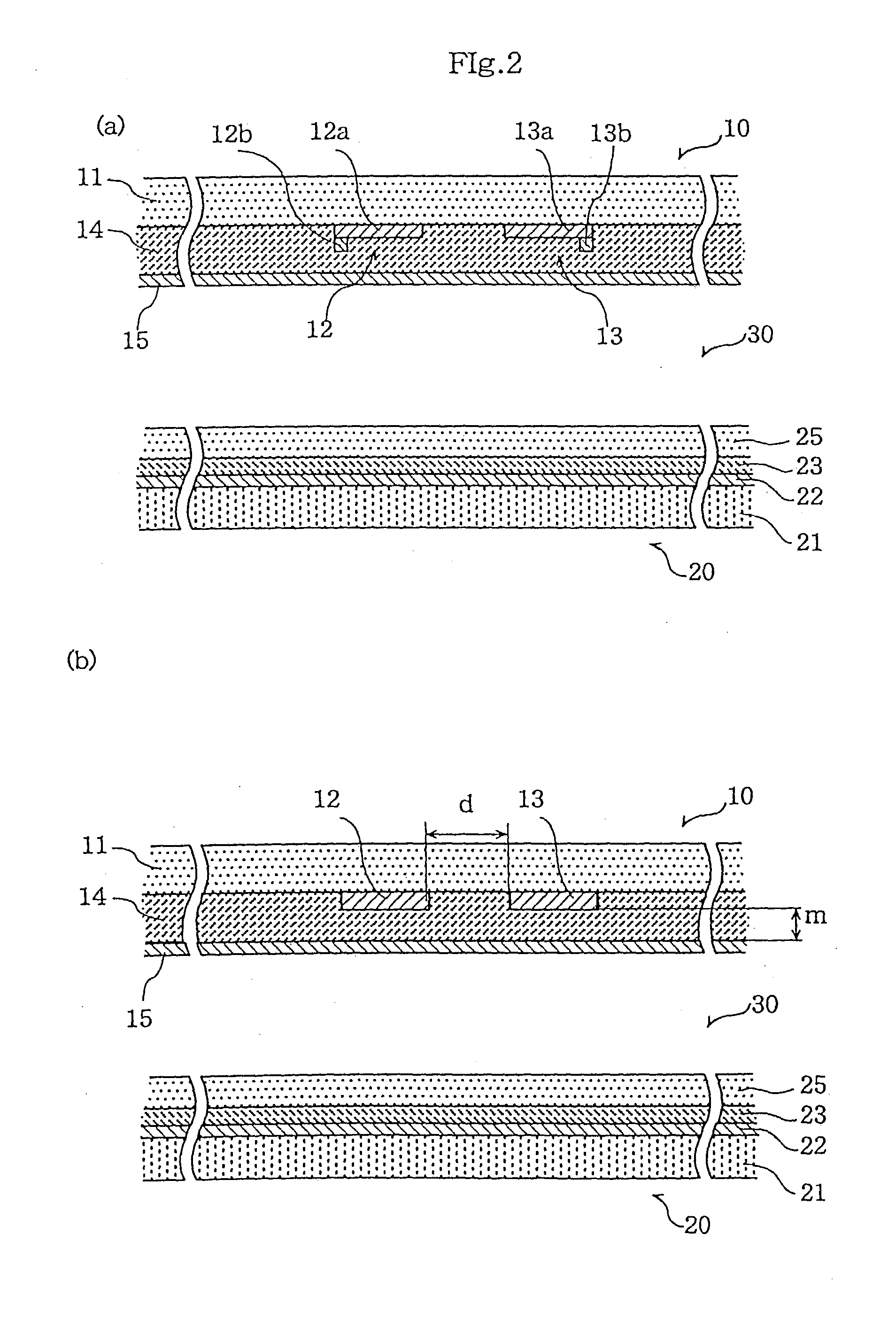Plasma display panel and method for its manufacure
a technology of plasma display panel and manufacure, which is applied in the manufacture of electric discharge tubes/lamps, cold cathode manufacturing, and electromechanical systems, etc., can solve the problems of increasing the depth and weight of crt televisions, difficult to produce large-screen lcds, and inconvenient production of crts. achieve good luminance efficiency and low manufacturing cost
- Summary
- Abstract
- Description
- Claims
- Application Information
AI Technical Summary
Benefits of technology
Problems solved by technology
Method used
Image
Examples
Embodiment Construction
[0132]
2TABLE 1
[0133] Actual Example PDPs No.1-5 are produced in accordance with the description about the above embodiment, which are shown in Table 1.
[0134] The first dielectric layers of these actual examples are made of silicones whose thicknesses are shown in Table 1. The second dielectric layers and ribs are made from a mixture of polymethylsiloxane resin and SiO.sub.2.
[0135] The materials for the dielectric layer and ribs are applied by process printing or spin coat method.
[0136] The example PDP No. 6 is a comparison example whose dielectric layers and ribs are made of PbO glass (with a dielectric constant of 11).
[0137] The following describes the specification used commonly for the actual and comparison examples.
[0138] The front glass plate and the back glass plate are a 2 mm thick soda lime glass plate. The cell size of these PDPs is determined according to a 42-inch VGA display; the ribs 24 are 0.15 mm high, the distance between any neighboring ribs 24 (cell pitch) is 0.36 ...
PUM
| Property | Measurement | Unit |
|---|---|---|
| dielectric constant | aaaaa | aaaaa |
| sizes | aaaaa | aaaaa |
| dielectric constant | aaaaa | aaaaa |
Abstract
Description
Claims
Application Information
 Login to View More
Login to View More - R&D
- Intellectual Property
- Life Sciences
- Materials
- Tech Scout
- Unparalleled Data Quality
- Higher Quality Content
- 60% Fewer Hallucinations
Browse by: Latest US Patents, China's latest patents, Technical Efficacy Thesaurus, Application Domain, Technology Topic, Popular Technical Reports.
© 2025 PatSnap. All rights reserved.Legal|Privacy policy|Modern Slavery Act Transparency Statement|Sitemap|About US| Contact US: help@patsnap.com



